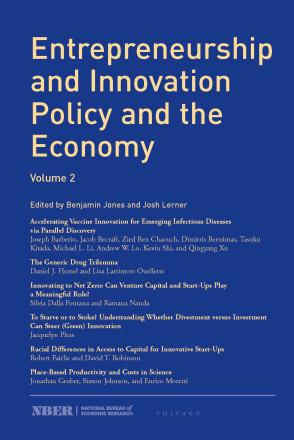Accelerating Vaccine Innovation for Emerging Infectious Diseases via Parallel Discovery

The COVID-19 pandemic has raised awareness about the global imperative to develop and stockpile vaccines against future outbreaks of emerging infectious diseases. Prior to the pandemic, vaccine development for emerging infectious diseases was stagnant, largely due to the lack of financial incentives for pharmaceutical firms to invest in vaccine research and development (R&D). This R&D requires significant capital investment, most notably in conducting clinical trials, but vaccines generate much less profit for pharmaceutical firms compared to other therapeutics in disease areas such as oncology.
The portfolio approach of financing drug development has been proposed as a financial innovation to improve the risk/return tradeoff of investment in drug development projects through the use of diversification and securitization. By investing in a sizable and well-diversified portfolio of novel drug candidates, and issuing equity and securitized debt based on this portfolio, the financial performance of such a biomedical “megafund” can attract a wider group of private-sector investors.
To analyze the viability of the portfolio approach in expediting vaccine development against emerging infectious diseases, we simulate the financial performance of a hypothetical vaccine megafund consisting of 120 mRNA vaccine candidates in the preclinical stage, which target 11 emerging infectious diseases, including a hypothetical “disease X” that may be responsible for the next pandemic. We calibrate the simulation parameters with input from domain experts in mRNA technology and an extensive literature review, and find that this vaccine portfolio will generate an average annualized return on investment of −6.0 percent per annum and a negative net present value of −$9.5 billion, despite the scientific advantages of mRNA technology and the financial benefits of diversification. We also show that clinical trial costs account for 94 percent of the total investment, while vaccine manufacturing costs account for only 6 percent. The most important factor of the megafund's financial performance is the price per vaccine dose, while other factors, such as the increased probability of success due to mRNA technology, the size of the megafund portfolio, and the possibility of conducting human challenge trials do not significantly improve its financial performance.
Our analysis indicates that continued collaboration between government agencies and the private sector will be necessary if the goal is to create a sustainable business model and robust vaccine ecosystem for addressing future pandemics.


